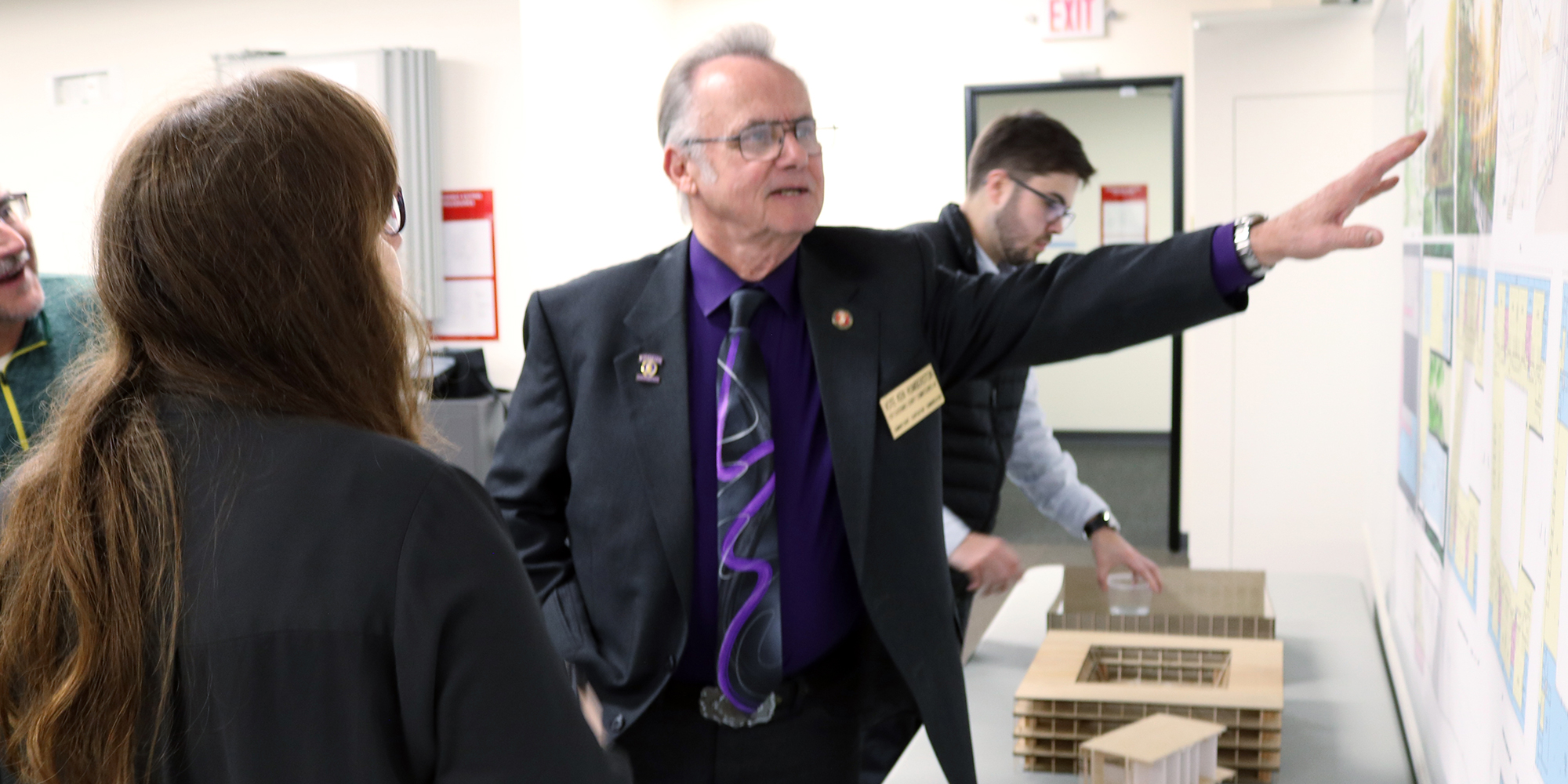
Architecture students from the University of Oregon put the finishing touches on their courthouse design before presenting them to Clackamas County staff.
Setting the stage for Clackamas County to become a leader in the advanced timber industry while creating a stronger economy, safer community and healthier environment—all in one fell swoop
Last spring, Clackamas County was awarded a $100,000 Wood Innovations Grant from the U.S. Department of Agriculture’s Forest Service to create a design studio in partnership with the University of Oregon School of Architecture and Environment. Twenty-four architecture students were brought on board to create six designs.
The assignment? Design a future courthouse for Clackamas County utilizing elements of cross-laminated timber (CLT), the first of its kind in the country.

Students presents courthouse design concepts to county staff.
CLT, a form of mass timber, uses cross-layered wood panels. Panels are created by gluing together layers of dimension lumber, enhancing their strength and stability. They can be used for structural components in floors, roofs, walls, columns and beams. According to Oregon BEST, CLT has the potential to create more than 23,000 jobs in Oregon by 2031.
“The use of mass timber not only pays tribute to the Pacific Northwest, but it can be done in a sustainable way so you’re not chopping down forests,” said Mara, an architecture student at the University of Oregon. “You can do like little patches at a time, so there’s time for re-growth, and keeping it local cuts down on fuel emission.”
Clackamas County is 75 percent forestland, and home to five lumber mills that can invest in CLT-processing to provide a regular, local supply — a testament to our region’s suitability for this innovative industry. “Being located between Portland and the forest makes Clackamas County the perfect place for investment in this new technology,” said Sam Dicke, Economic Development Coordinator with the County. “Additionally, there are numerous businesses already existing within the County that can join in the growing supply chain.”
Building a welcoming center for justice

The need for a new Clackamas County courthouse presents an opportunity to use this cutting-edge material, and marks a pivotal moment for the county to create a vision that aligns well with our goals. “You don’t get to build these very often,” said Gary Barth, project director of the courthouse.
Built in 1936, the current courthouse no longer meets the demands of our increasing population. The facility poses significant safety risks and functional challenges, including a lack of space for jurors and nowhere to keep defendants and witnesses separate.
“We want the courthouse to be a very welcoming center of justice,” Barth said.

Commissioner Ken Humberston discusses design concepts with University of Oregon students.
The University of Oregon students worked in groups on creating designs that would address critical safety and efficiency improvements, as well as bolster the economy and the environment. Next up, a life cycle analysis will be performed on the top two designs to determine the cost and environmental benefits of CLT when compared with more traditional building materials. The results are expected in spring 2020. Learn more about the courthouse project.
*USDA is an equal opportunity provider, employer and lender.
 Translate
Translate





